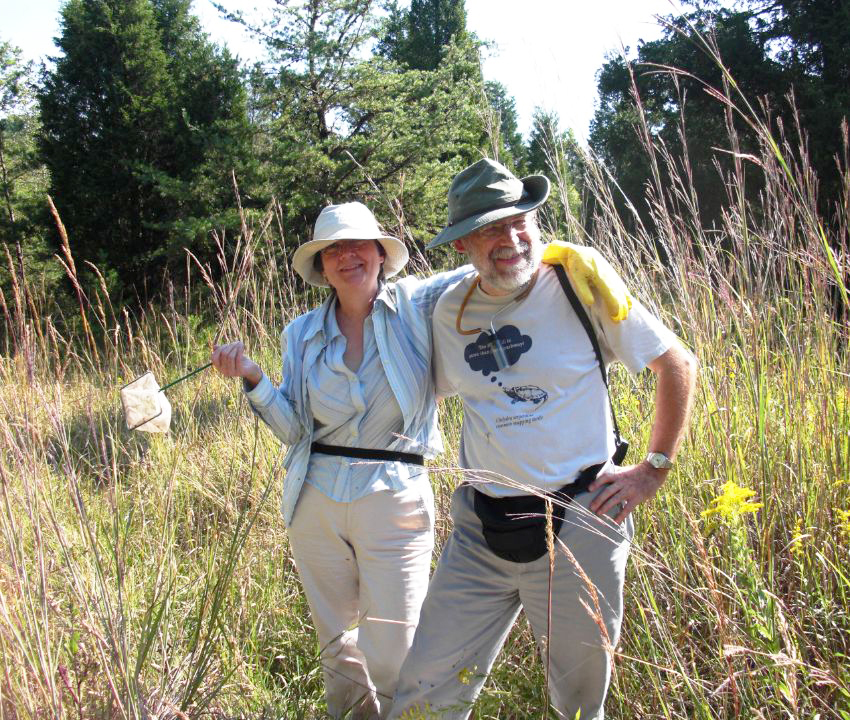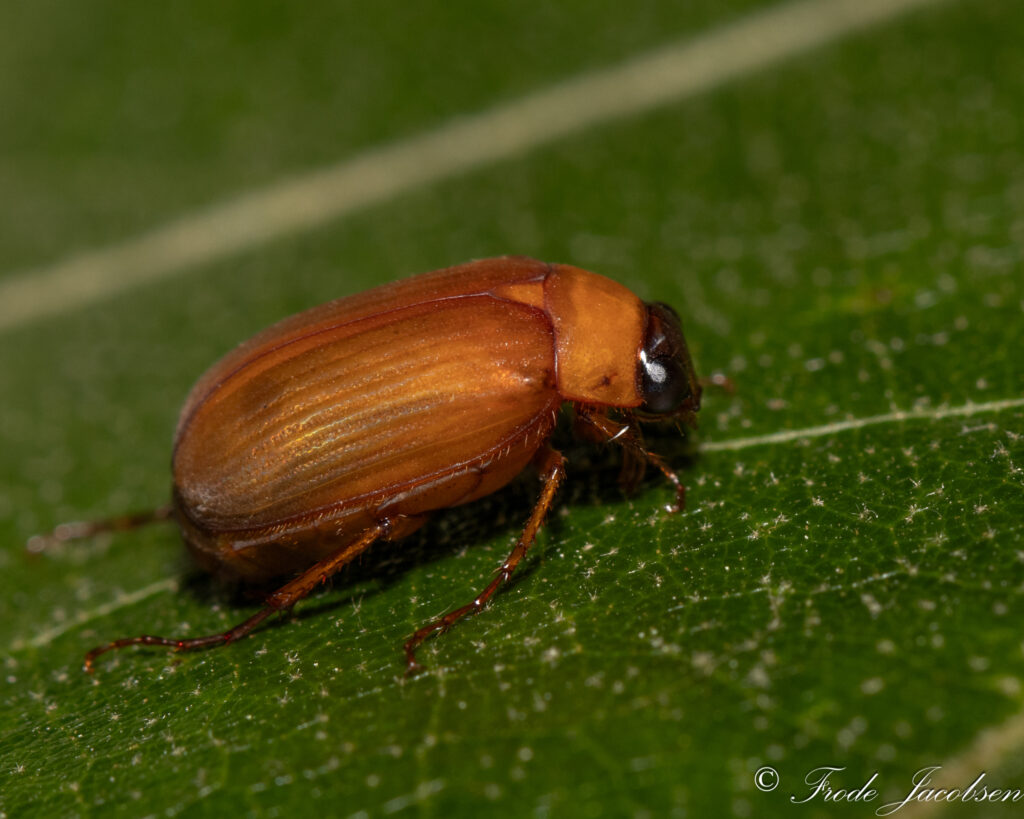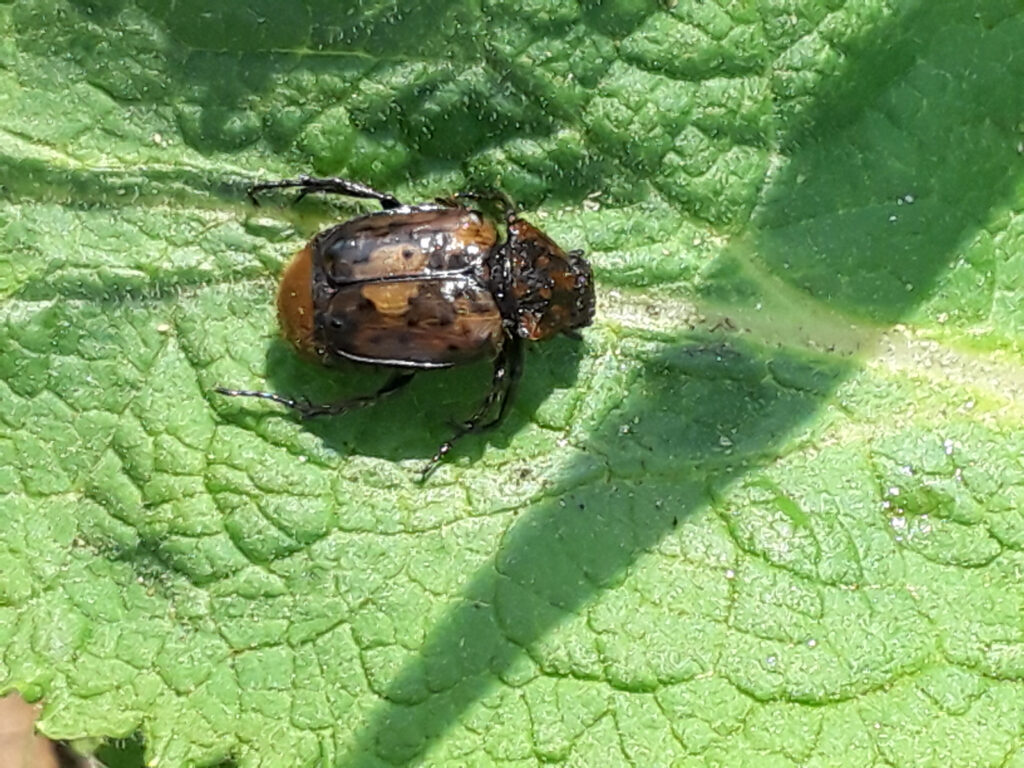by Mona Patterson

Beetles, with their astonishing diversity and ecological prowess, quietly underpin the health of ecosystems around the globe. But do we even know what beetles roam our backyards? As of July 2024, the bug-catching duo Charlie and Sue Staines have identified over 1,000 beetle species on the campus of the Smithsonian Environmental Research Center (SERC), unveiling a dazzling array of nature’s tiny marvels.
There are over 25,000 beetle species in North America alone. This makes their conservation critical to the survival of countless organisms, including our own. As prominent decomposers, they aid in the breakdown of forest matter and recycling of nutrient-rich material back into the ecosystem. As predators, they reduce populations of problem insects, like aphids and caterpillars. By studying beetles at SERC, we can better understand their populations, their roles in ecosystems and the overall health of the environments they inhabit.
The Beetle Search Begins
I joined Charlie on a particularly warm and sunny June morning to check Malaise and Lindgren funnel traps. Along the way, Charlie spotted a morning glory flower. We paused to take a closer look and noticed that the plant’s leaves were being eaten. Charlie immediately identified the tortoise beetle as the culprit behind the bite-sized holes. I quickly found myself turning over every leaf to try and find this hungry insect. With a keen eye, Charlie spotted it within seconds—a brilliant, tiny golden tortoise beetle. I had expected to find beetles that day. But I was delightedly surprised to discover a newfound appreciation for stopping, observing and taking a closer look at the unassuming elements of our environment.


Charlie Staines looks for insects in a funnel-shaped Lindgren trap (left) and a tent-like Malaise trap made of mesh (right). (Left photo by Sue Staines; right photo courtesy of Charles Staines)
Always fascinated with the smaller side of life, Charlie and Sue Staines have been deeply immersed in the tiny worlds of beetles for decades. Throughout his career, Charlie has classified many kinds of insects. He’s received requests from governments both nationally and internationally to help with identification. Meanwhile, Sue’s college education in various ecological courses also prepared her for a lifetime of insect hunting expeditions. Working alongside Charlie, Sue contributes to the expansion of species knowledge by using her understanding of insect-plant relationships.
After 32 years classifying insects at the National Museum of Natural History in Washington, D.C., Charlie and Sue were eager to pursue their passion for discovering beetles in the field. Through a participatory science program, they took on the challenge of identifying and recording beetle species at SERC. Since 2018, the pair has devoted most of their time to collecting, identifying and recording beetles. That task is now entering its seventh year.
“I was out working in the garden when he found his thousandth species,” Sue said. “And he ran outside to tell me about it.” The 1000th species on the SERC campus was Nipponoserica peregrina, which Charlie later identified in his makeshift lab at home. N. peregrina is a member of the scarab beetle family. Originating from Japan, it primarily lives on plants.

Throughout their time collecting, Charlie and Sue closely monitored the health of beetles and the broader ecosystem. Based on the species they’ve found, Charlie says the ecosystem on SERC’s campus in Maryland appears healthy.
“So far, it looks like it’s a pretty robust, well-functioning ecosystem,” Charlie said.
However, they have also seen drops in some beetle species that were abundant just 20 or 30 years ago. For example, firefly populations are experiencing a drastic decline. Light pollution and habitat loss are the main culprits. Artificial lights disrupt firefly flash patterns, hindering their ability to find suitable mates.
“It was surprising that things that were normally just everywhere—you could beat them out of trees…we couldn’t find one,” said Sue. More than 60% of beetle species tracked by the International Union for Conservation of Nature (IUCN) are in decline, according to the Xerces Society for Invertebrate Conservation. As with the fireflies, light pollution and habitat loss are driving the declines of many beetle species. But climate change and pesticide use also play a role.

Tiny Lessons
By overlooking common species, both Charlie and Sue stress, we can miss vital information about how our ecosystems are evolving.
“We want to open people’s eyes, which is why we are studying in Maryland,” said Sue. “We try to encourage people to look at things… simple things that otherwise appear common.”
During our conversation, Charlie eagerly pulled out his phone and showed me a vast collection of photos he has taken over the years. As he showed me his photos, I was transported deep into the Maryland forests, using lights and white sheets to trap moths at night. I was with Sue as she used special fishing nets to reach down into muddy wetland holes to grab insects. Their passion is contagious and urged me to get curious in my environment.
Their work has also inspired new research here at SERC. Charlie will be working with the Spatial Ecology and Conservation Lab on a new ground-beetle project at BiodiversiTREE, SERC’s massive forest restoration experiment. This past summer, Spatial Ecology intern Erin Allen joined the Staines in the field, voluntering time on holidays, weekends and some early mornings and late evenings.
Charlie is also working extensively on a beetle identification aid. This new guide could help researchers less fluent in beetle taxonomy to locate and identify the beetles they’re working with.
Charlie and Sue’s love for beetles extends far beyond mere fascination. It’s woven intricately into both their professional lives and personal hobbies.
“When we travel and we stop at roadside rest areas, we go to the dog areas and look for dung beetles,” said Sue. “When we stop for gas at night, we check the light at the gas station because the insects come to the lights, hit the poles, and drop…It doesn’t end. No. Always. Oh, there’s always something.”
Sue describes their unending search for beetles as their attempt to teach one of her favorite mantras: “Don’t overlook the common.”
As a person who wasn’t typically fond of beetles before meeting Charlie and Sue, I left our interaction with a newfound admiration for these insects. Knowing which beetles live in our backyards and their roles exposes the interconnectedness of entire ecosystems. If we shift our perspective and view beetles as crucial contributors rather than pests, how might that alter our perception of the environment and our role within it?
In just six years, Charlie and Sue identified over 1,000 beetle species within the 2,650 acres of SERC land here in Maryland. Imagine the magical world we could unlock, if we all just looked a little closer to our gardens or the insects drawn to the night lights.

